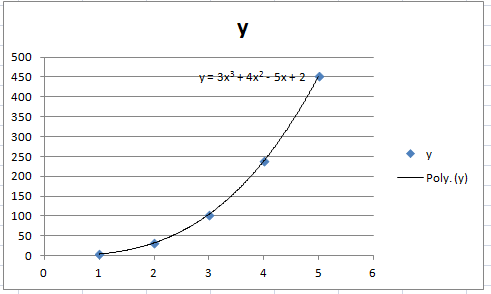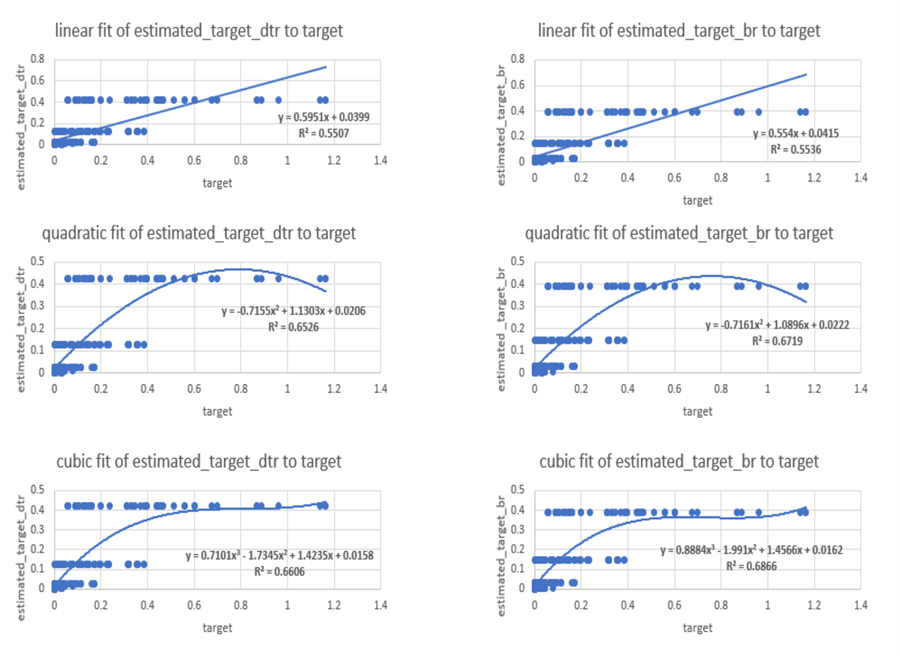


This adds the "Data Analysis" button to your ribbon, on the Data tab,Īnalysis group (this is also the location where you can find the SolverĬlick that button to explore which regression tools are available. The add-ins list of Excel with the Analysis toolpak activated Office button, Excel Options, Add-ins tab, click Go): Regression tools in the Analysis Toolpak Add-inĪctivate the Analysis Toolpak in your list of Add-ins (File button or With some tricks you canĪlso perform LS on polynomes using Excel. Y=a.x+b, y-a.exp(b.x), y=a.x^b and etcetera. Fitting simple linear equationsĮxcel provides us with a couple of tools to perform Least SquaresĬalculations, but they are all centered around the simpler functions: Method here, just read up on the matter by clicking that link to Perhaps you did some measurements with results like this:Ī well known way to fit data to an equation is by using the If you're a properĮngineer, you also have some idea what type of equation should Way to fit your measurement results with a curve.

Have probably done your bit of experimenting. If you're an engineer (like I used to be in a previous life), you 13.2.Fitting curves to your data using least squares Introduction.13.2.3 Run the Probit logistic Regression model using stats package.13.2 R-Lab: Running Probit Analysis in R.12.10 Measuring Strength of Association (Calculating the Pseudo R-Square).12.9 Compute a confusion table and misclassification error (R exclusive).12.6 Run the ordinal logistic Regression model using MASS package.12.1 Introduction to Ordinal Logistic Regression.11.7.9 Interpretation of the Predictive Equation.11.7.3 Run the Multinomial Model using “nnet” package.11.7.1 Understanding the Data: Choice of Programs.11.7 R Labs: Running Multinomial Logistic Regression in R.11.6 Features of Multinomial logistic regression.11.5 Checking AssumptionL: Multicollinearity.11.1 Introduction to Multinomial Logistic Regression.10.7.3 Running a logstic regression model.10.7.1 Data Explanations ((Data set: class.sav)).10.7 R Lab: Running Binary Logistic Regression Model.10.6 Likelihood Ratio Test for Nested Models.10.2 The Purpose of Binary Logistic Regression.9.2.1 Organize Longitudinal Data: Long Format vs. Wide Format.8.7 Question 4 - How do public and Catholic schools compare in terms of mean math achievement and in terms of the strength of the SES-math achievement relationship, after we control for MEAN SES?.8.6 Question 3 - Is the strength of association between student CSES and math achievement similar across schools? Or is CSES a better predictor of student math achievement in some schools than others?.8.5 Question 2 - Do schools with high MEAN SES also have high math achievement?.high schools vary in their mean math achievement? 7.2.6 Adding an interaction term to the model.7.2.5 Random intercepts and slopes model.7.2.3 Setting up an Unconditional Model.7.2.2 Setting up the simple linear model.7.2 R Lab: Running Multilevel models in R.6.3 Run the Curvilinear Regression Model.6.1 Introduction to Curvilinear Regression.5.5.4 Check the outliers by using Cook’s Distance.5.5.3 Check the outliers by using Mahalanobis Distance.5.5.1 Check the correlation matrix & the P-value matrix.5.4.1 Run the Multiple Regression model.5.2.5 Centering Variable for better interpretation.5.1 Introduction to Multiple Regression.4.3 Partial and Semi-partial Correlation.4.2 Point Biserial Correlation & Phi Correlation.4.1.3 Calculating the Pearson/Spearman Correlation in R.3.7.3 Select 10% of total student at random and delete unselected cases.3.7.2 Select students who have id=3001 to id=4000 and filter out unselected cases.3.7.1 Select ‘gender = girl’ and ‘year = 2000’ and create a new dataset named by GIRL_2000.3.6.3 Perform frequency analysis for ‘learning2, learning4, confidence2_re, confidence3_re, confidence6_re’.3.6.2 Recode ‘confidence2, confidence3, confidence6’ variables only for students who are born in 1999 (‘year’ variable) and save the recoded variables into ‘confidence2_re, confidence3_re, confidence6_re’ variables.3.6.1 Recode into same variables for ‘learning2, learning4’.3.5.1 Load the car package for reverse coding.3.4.4 Perform descriptive analysis (mean,median,mode,and S.D.) on ScienceScore, ParentSupport,and StudentsBullied.3.4.3 Create new variable,‘StudentsBullied’ using the sum of 6 variables (studentbullied1-studentbullied6).3.4.2 Create new variable,‘ParentSupport’ using the mean of 4 variables (parentsupport1-parentsupport4).3.4.1 Create new variable,‘ScienceTotal’,using the average of (score1-score5).3.4 Class Activity 1: Calculate the aggregated data.



 0 kommentar(er)
0 kommentar(er)
